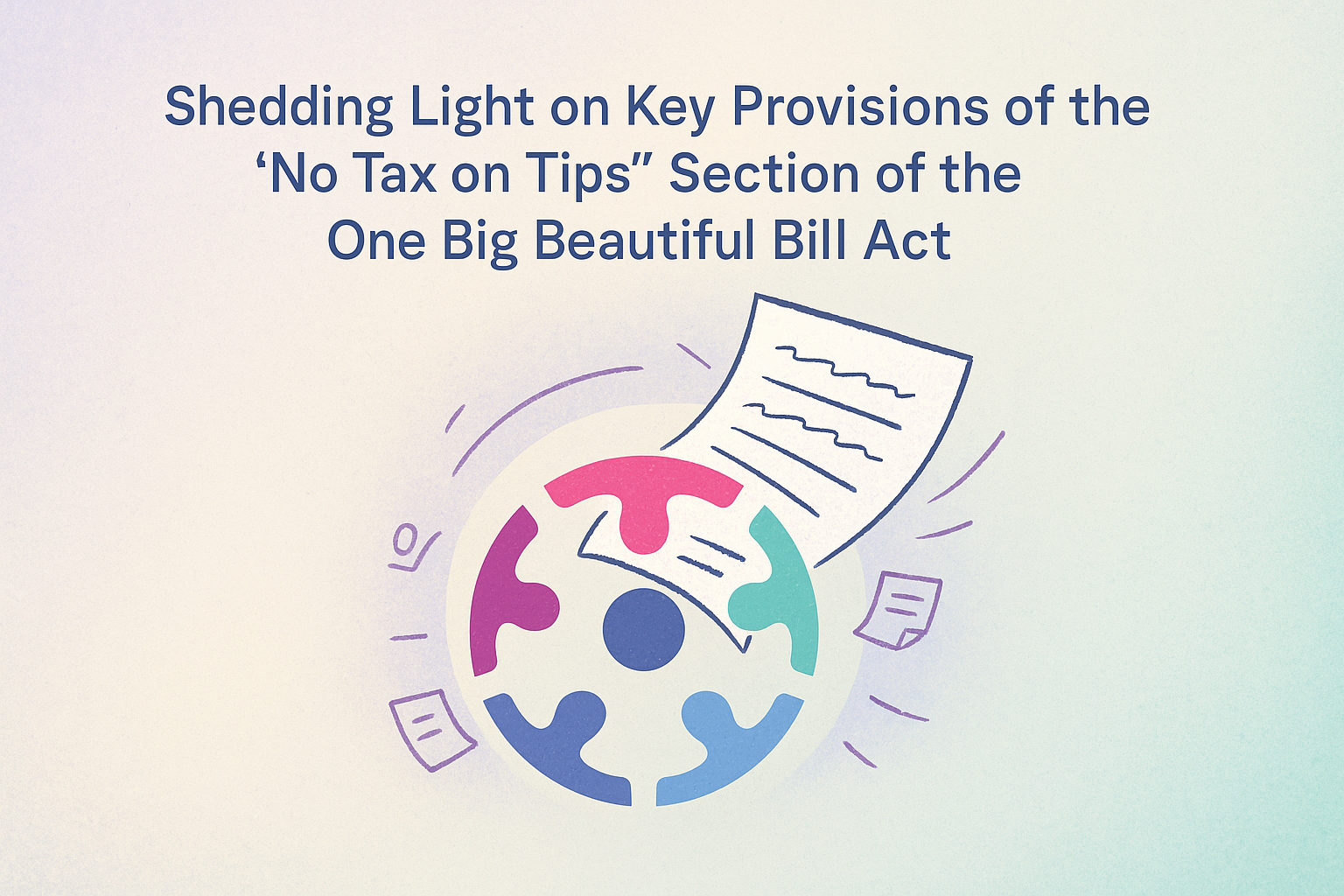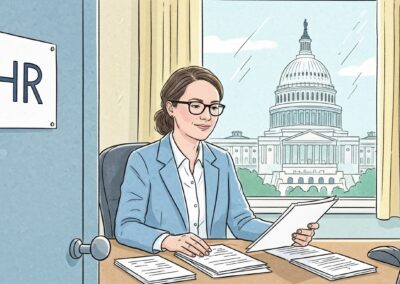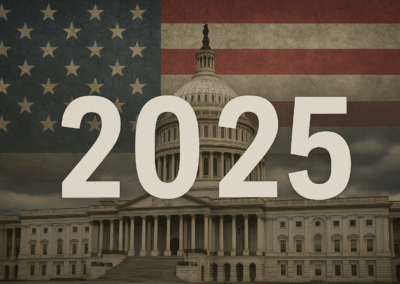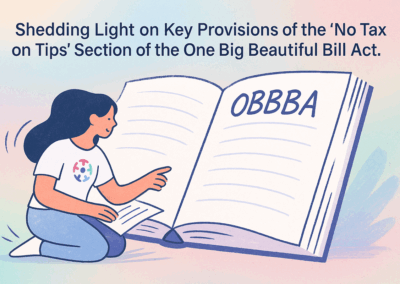A new federal tax provision goes into effect retroactively, starting January 01, 2025, that could put more money directly into the pockets of tipped workers. Under Section 70201 of the One Big Beautiful Bill Act, qualifying tips can now be deducted from taxable income — up to $25,000 annually — meaning many employees will see a lower federal tax bill.
This change doesn’t just benefit employees — it also comes with new reporting rules that employers need to know. Let’s break it down.
What We Will Cover in This Article
-
- Who qualifies for the deduction and how much it’s worth
- Rules and limits for high earners and business owners
- Which types of tips are included and excluded
- Required reporting for employers, payment processors, and employees
- New industries eligible for the federal tip credit
- How the IRS will verify compliance
- Key dates for implementation
Summary of Key Provisions – Section 70201: No Tax on Tips
1- Deduction Overview
-
- What’s deductible:
- “Qualified tips” received during the year, as reported to the IRS or by the taxpayer (Form 4137 or successor).
- Applies to tips reported via employer wage statements (Form W-2), contractor payment statements (Form 1099), or third-party payment processors.
- Above-the-line deduction: Available to all taxpayers — even if they don’t itemize deductions.
- What’s deductible:
2- Deduction Limit
-
- Annual cap: $25,000 per taxpayer.
- Income phase-out:
- Deduction reduced by $100 for every $1,000 of Modified Adjusted Gross Income (MAGI) above:
- $150,000 for single filers.
- $300,000 for joint filers.
- MAGI includes foreign earned income and certain U.S. territory income exclusions.
- Deduction reduced by $100 for every $1,000 of Modified Adjusted Gross Income (MAGI) above:
- Business tip income: For self-employed individuals, deduction applies only if business income (including tips) exceeds total business deductions (excluding this tip deduction).
3- Definition of “Qualified Tips”
-
- Eligible tips:
- Cash tips in occupations that customarily and regularly received tips on or before December 31, 2024 (Treasury will publish the list within 90 days of enactment).
- Includes tips received directly, through credit card transactions, or via tip-sharing arrangements.
- Conditions:
- Voluntary payments — not negotiated or mandatory service charges.
- Payer determines amount.
- Occupation must not be a “specified service trade or business” under IRC §199A(d)(2), unless employee’s employer is in such a business (in which case tips are treated as SSTB income).
- Must meet any additional IRS requirements set by regulation.
- Eligible tips:
4- Identification Requirement
-
- Social Security Number (SSN) must be included on the tax return to claim the deduction.
- Missing or incorrect SSN will be treated as a mathematical or clerical error by the IRS.
5- Filing Status Rule
-
- Married taxpayers must file jointly to claim the deduction.
6- Anti-Abuse Rules
-
- IRS will issue regulations to prevent reclassifying income as tips solely to claim the deduction.
7- Coordination with Other Tax Provisions
-
- Deducted tip amounts cannot also be counted for the §199A Qualified Business Income (QBI) deduction.
8- Extension of Employer Tip Credit (§45B)
-
- Expands eligible industries beyond food and beverage service to include:
- Barbering and hair care.
- Nail care.
- Esthetics.
- Body and spa treatments.
- For food and beverage establishments, credit still based on 2007 minimum wage level.
- Expands eligible industries beyond food and beverage service to include:
9- Enhanced Reporting Requirements
Businesses and payment processors must separately identify and report:
-
- The portion of payments designated as cash tips.
- The recipient’s occupation (from Treasury’s published list).
- Applies to:
- Form 1099 payers (§6041 & §6041A).
- Third-party payment processors (§6050W).
- Employer wage statements (§6051).
- Both statements to the IRS and to the recipient must include the data.
10- IRS Publication & Withholding Adjustments
-
- List of tip-based occupations due within 90 days of enactment.
- IRS to modify withholding procedures starting in 2026 to account for the deduction.
11- Effective Dates & Transition Rules
-
- Applies to tax years beginning after Dec. 31, 2024.
- Transition rule for tips earned before Jan. 1, 2026: Businesses may use a reasonable method (approved by IRS) to estimate cash tips for reporting.
- Deduction ends after Dec. 31, 2028 unless extended by Congress.
Final Thoughts and What to Expect Next
This is one of the most significant tax changes for tipped workers in decades. Employees in restaurants, salons, spas, and similar industries could see immediate take-home benefits, while employers will need to update payroll systems to capture the required reporting details.
The IRS will soon publish the official list of tip-eligible occupations and issue regulations clarifying how to prevent abuse of the deduction. Employers should also watch for updated withholding tables and form instructions by late 2025.
Want to Take Advantage of These Changes?
If you want to know exactly what steps to take now — whether you’re an employee looking to claim the deduction or an employer looking to claim the expanded credit and preparing to comply — we can help.
We’ve prepared a ready-to-share Action Checklist for both employers and employees:
-
- Employers: Know your new tracking and reporting duties and how to update your payroll process.
- Employees: Understand how to claim your deduction and keep proper records.
Request your checklist by 📩 contacting us and including ‘No Tax on Tips Action Checklist’ in the comment section.
Our team at dynamo HCM can walk you through the process so you can make the most of this new tax benefit — and avoid compliance headaches later.





